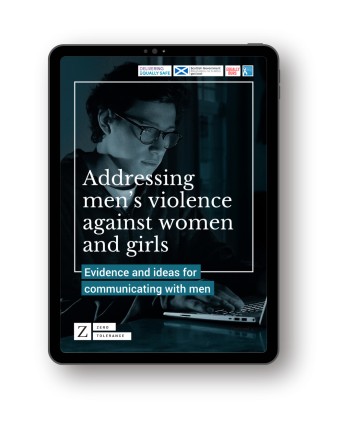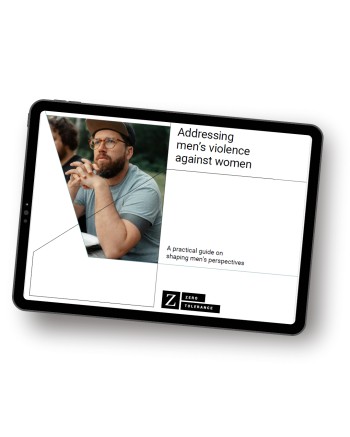Engaging men and boys
We want a Scotland free from men’s violence against women and girls.
This is achievable and we have solutions!
Key to success is tackling the root cause of the issue – gender inequality.
It’s an ambitious goal, but across Scotland people are dedicating time and energy to achieving this in many different ways, such as:
-
working for equal representation in our government and parliament
-
reducing the gender pay gap
-
encouraging more girls to choose science, technology, engineering, and mathematic subjects at school and enter STEM careers
But so often, when we talk about gender equality and ending men’s violence against women and girls, we’re preaching to the choir. These issues are often framed as ‘women’s issues’ and women’s responsibility.
Men tune out. Either feeling the conversation isn’t relevant to them or that it isn’t their place to join in.
Improving things requires widespread culture, attitude, and behaviour change throughout Scotland – including men and boys.
So the questions is...
How do we encourage men to get involved in preventing men’s violence against women and girls?
Our search for an answer led us to partnering with White Ribbon Scotland and working with Equally Ours.
‘Addressing men’s violence against women and girls: evidence and ideas for communicating with men’ summarises our foundational research on this topic. It gives evidence on how best to talk to Scottish men aged 16 – 45 who believe in gender equality but don’t often think about or take action on it.
We successfully developed messaging that leads these men to better understand:
-
the link between gender inequality and men’s violence against women and girls
-
that gender equality benefits everyone –and support it
This work will be most useful for those doing community prevention work, running campaigns that include men as an audience, and working with men on masculinity.
The aim of this project are ambitious. Achieving wide scale narrative change takes time and repetition.
To support you to use the findings of this report we have an accompanying toolkit, ‘Addressing men’s violence against women and girls: A practical guide on shaping men’s perspectives’.
Sign up to our new newsletter to get your copy!

In this section
- Our work
- Campaigns
- Policy Work
- Media
- Research
- Engaging men and boys
- Many Good Men
- It’s all about control! Disabled women’s experience of men’s violence
- Girls Rights are Human Rights!
- Future Tales: marginalised women’s vision of a Scotland free from men’s violence against women and girls
- “We need this to do things differently”
- Early Years Research
- Media Monitoring
- Sexism is a waste….’: the need to tackle violence and misogyny in Scotland’s workplaces
- Young People Research
- Children and young people


